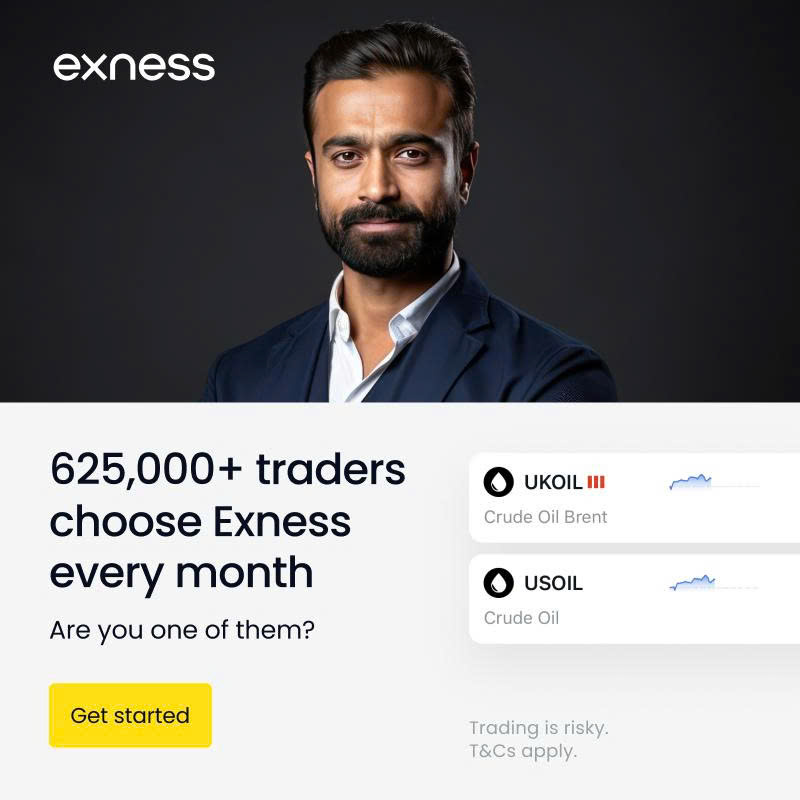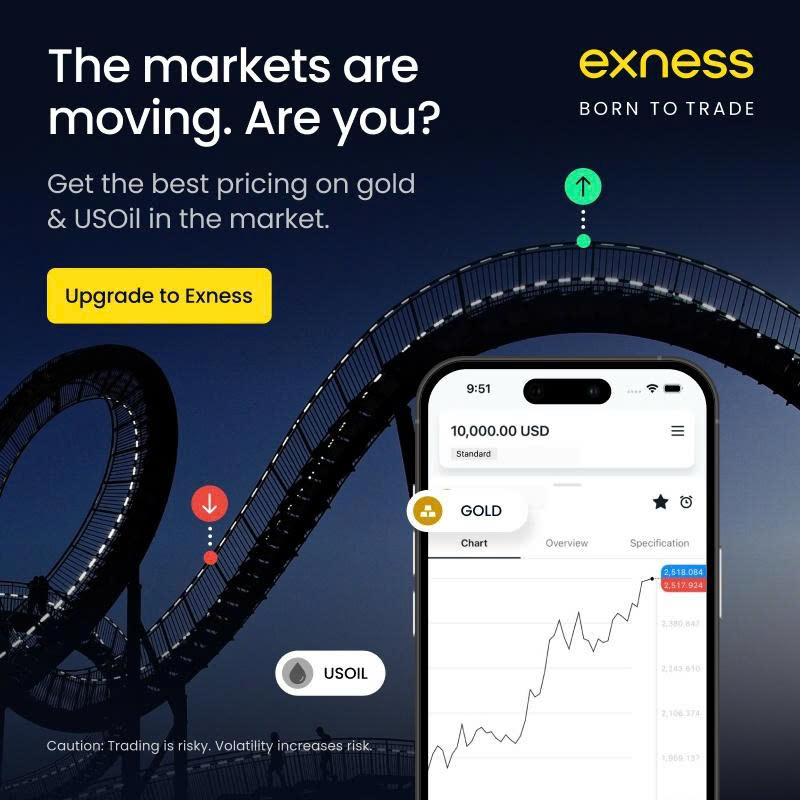
8 minute read
Exness Broker Charges? Exness Fees Explained
When choosing a forex or CFD broker, understanding the fee structure is critical for optimizing your trading strategy and maximizing profitability. Exness, a globally recognized brokerage established in 2008, is known for its competitive trading conditions, transparent pricing, and user-friendly platforms. But what exactly are the Exness broker charges, and how do they impact your trading? In this comprehensive guide, we’ll break down Exness fees, including spreads, commissions, swap rates, and non-trading fees, to help you make informed decisions. Whether you’re a beginner or an experienced trader, this article will clarify Exness’s fee structure and compare it to industry standards.

✅ Join Exness now! Open An Account or Visit Brokers 👈
Why Understanding Broker Fees Matters
Broker fees directly affect your trading profitability. Hidden or unexpected charges can erode your gains, especially for high-frequency traders or those holding positions long-term. By understanding Exness’s fee structure, you can select the right account type, budget effectively, and tailor your trading strategy to minimize costs. Exness is renowned for its transparency, offering competitive pricing and a variety of account types to suit different trading styles. Let’s dive into the details of Exness fees and how they work.
Types of Exness Accounts and Their Fee Structures
Exness offers several account types, each designed to cater to different trading needs, from beginners to professional traders. The fee structure varies depending on the account type, and understanding these differences is key to choosing the right one for you. Here’s an overview of the main account types and their associated fees:
1. Standard Account
Target Audience: Beginners and casual traders.
Spreads: Start from 0.3 pips, with an average of 1.0 pip for major currency pairs like EUR/USD.
Commissions: No commissions; trading costs are embedded in the spreads.
Swap Fees: Applied to positions held overnight, based on interest rate differentials. Swap-free options are available for certain instruments and for traders in Muslim countries.
Best For: Traders who prefer simplicity and don’t trade high volumes.
2. Standard Cent Account
Target Audience: New traders looking to practice with smaller lot sizes.
Spreads: Slightly higher than the Standard account, starting at around 1.1 pips for EUR/USD.
Commissions: None; costs are included in the spreads.
Swap Fees: Similar to the Standard account, with swap-free options available.
Best For: Beginners testing strategies with minimal risk.
3. Pro Account
Target Audience: Experienced traders seeking low spreads and fast execution.
Spreads: Lower than Standard accounts, starting at 0.1 pips for major pairs.
Commissions: Commission-free, with costs built into the spreads.
Swap Fees: Vary by instrument; reduced rates may apply for certain assets.
Best For: Scalpers and day traders who prioritize tight spreads.
4. Raw Spread Account
Target Audience: High-volume traders and scalpers.
Spreads: Start at 0.0 pips, among the lowest in the industry.
Commissions: Fixed at $3.50 per lot per side ($7 round-turn).
Swap Fees: Applied to overnight positions; swap-free accounts available.
Best For: Traders who prefer ultra-tight spreads and are comfortable with commissions.
5. Zero Account
Target Audience: Professional traders seeking minimal spreads.
Spreads: 0.0 pips on select instruments during stable market conditions.
Commissions: Start at $3.50 per lot per side, varying by instrument.
Swap Fees: Similar to other accounts, with swap-free options.
Best For: High-frequency traders and those trading exotic pairs or commodities.

✅ Join Exness now! Open An Account or Visit Brokers 👈
Breakdown of Exness Trading Fees
Exness’s trading fees primarily consist of spreads, commissions, and swap fees. Here’s a detailed look at each component:
Spreads
The spread is the difference between the bid (buy) and ask (sell) prices of an asset. It’s the primary cost for most traders and varies based on the account type, market conditions, and instrument traded. Exness is known for competitive spreads, particularly on Raw Spread and Zero accounts, where spreads can start at 0.0 pips for major currency pairs like EUR/USD. For Standard accounts, spreads average around 1.0 pip, which is still competitive compared to industry averages of 1.0–2.0 pips for similar accounts at brokers like XM or IG.
Spreads fluctuate based on market volatility. During high-impact news events or low-liquidity periods, spreads may widen, so traders should monitor market conditions. Exness provides transparent price history and tick-level data to help traders anticipate costs.
Commissions
Commissions are charged only on Raw Spread and Zero accounts, typically at $3.50 per lot per side ($7 round-turn). This is competitive compared to brokers like IC Markets, which charge $7–$8 round-turn for similar accounts. Standard, Standard Cent, and Pro accounts are commission-free, with costs embedded in the spreads, making them ideal for traders who prefer predictable pricing.
Swap Fees (Overnight Fees)
Swap fees, or rollover fees, apply to positions held overnight and are based on the interest rate differential between the two currencies in a pair. These fees are charged daily at 21:00 GMT+0 (with triple swaps on Wednesdays for forex pairs to account for weekends). Exness offers swap-free trading for most instruments, including major forex pairs, cryptocurrencies, and gold, which is a significant advantage for long-term traders. Islamic accounts are automatically swap-free for traders in Muslim countries.
Traders can use Exness’s trading calculator to estimate swap costs based on the instrument and position size. Swap rates vary by market conditions and can be positive or negative, depending on the trade direction. For example, high-yield pairs like those involving the Turkish Lira may have significant swap rates.
Non-Trading Fees at Exness
Exness stands out for its low non-trading fees, which include deposit, withdrawal, and inactivity fees. Here’s what you need to know:
Deposit and Withdrawal Fees
Exness does not charge deposit or withdrawal fees for most payment methods, including bank transfers, credit/debit cards, and e-wallets like Skrill, Neteller, and WebMoney. However, third-party providers (e.g., banks or e-wallets) may impose their own fees, so traders should verify these costs. Exness processes withdrawals instantly in most cases, with 98% completed in under a minute, though third-party processing times may vary.
For traders in India, Exness supports local payment methods like UPI and online banking, often with no fees and instant processing. Accounts in INR are available to avoid currency conversion fees.
Inactivity Fees
Exness does not charge inactivity fees for accounts dormant for less than 12 months. However, accounts inactive for over a year may face restrictions or penalties, so traders should place at least one trade every three months to maintain active status. This is a significant advantage over brokers like XM, which may charge inactivity fees after shorter periods.
Currency Conversion Fees
If you deposit or withdraw in a currency different from your account’s base currency (e.g., USD or INR), Exness applies currency conversion fees. These fees are generally low but depend on the payment method and exchange rates. Traders can minimize these costs by using accounts in their local currency or selecting payment methods with lower conversion fees.
Comparing Exness Fees to Competitors
Exness’s fee structure is highly competitive compared to other leading brokers. Here’s a quick comparison:
Spreads: Exness’s Raw Spread and Zero accounts offer spreads starting at 0.0 pips, lower than XM’s 1.0-pip standard spreads or IG’s 1.6–2.0 pips.
Commissions: Exness’s $7 round-turn commission on Raw Spread accounts is lower than IC Markets’ $7–$8.
Swap Fees: Exness’s swap-free accounts for most instruments are a major advantage, as many brokers charge swaps on most assets.
Non-Trading Fees: Exness’s lack of deposit, withdrawal, and inactivity fees (for up to 12 months) sets it apart from brokers like XM, which may charge for inactivity or withdrawals.
Tips to Minimize Exness Trading Costs
To your trading with Exness, consider these strategies:
Choose the Right Account Type: Select an account that aligns with your trading style. For example, use Raw Spread or Zero accounts for scalping, and Standard or Pro accounts for longer-term trades.
Use the Exness Calculator: Estimate spreads, commissions, and swaps before placing trades to avoid surprises.
Trade Swap-Free Instruments: Take advantage of Exness’s swap-free trading on assets like forex majors, crypto, and gold to reduce overnight costs.
Avoid Currency Conversion Fees: Open an account in your local currency (e.g., INR for Indian traders) to minimize conversion costs.
Stay Active: Place at least one trade every three months to avoid potential dormancy restrictions.
Monitor Market Conditions: Spreads can widen during volatile periods, so trade during stable market hours when possible.
Exness Fees for Indian Traders
For traders in India, Exness offers tailored conditions that enhance cost-effectiveness. Local payment methods like UPI and online banking ensure fast, often fee-free transactions. INR-based accounts help avoid currency conversion fees, though USD accounts are more common. Exness is not regulated by SEBI, as forex trading is limited in India, but it operates under strict global regulations like the FCA in the UK, ensuring safety. Indian traders should check with their payment providers for potential third-party fees and consult Exness’s support for region-specific guidance.
Conclusion
Exness offers a transparent and competitive fee structure, making it a top choice for forex and CFD traders worldwide. With no deposit or withdrawal fees, no inactivity fees for up to 12 months, and swap-free trading on many instruments, Exness minimizes non-trading costs. Its account types cater to various trading styles, with tight spreads and low commissions on Raw Spread and Zero accounts. By understanding Exness’s fees and choosing the right account, traders can their strategies and boost profitability.
✅ Join Exness now! Open An Account or Visit Brokers 👈
Read more:

